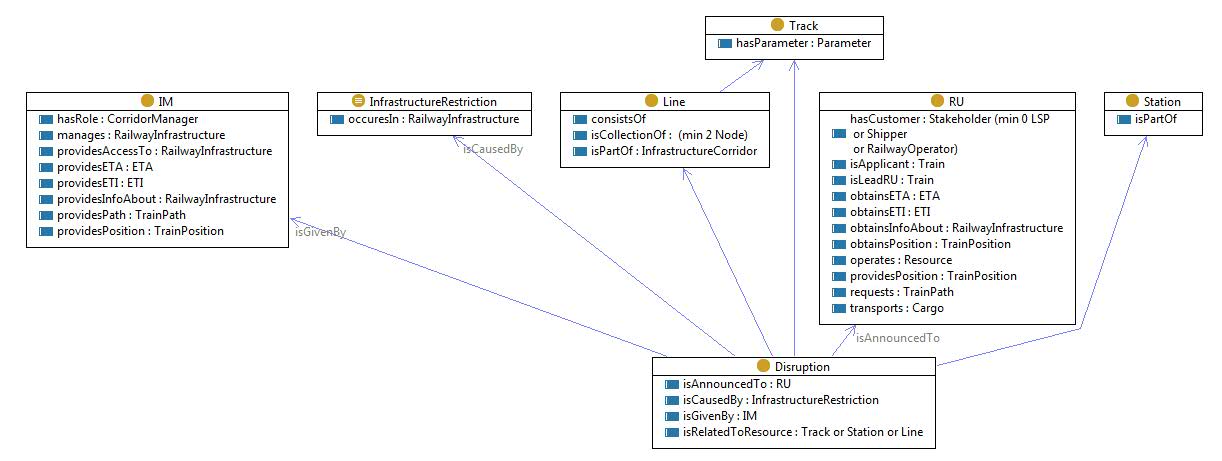rdfs:comment
-
 |
A disruption occurs “when some disorder on the rail network leads to disruption of the rail services provided by IMs to RUs, and consequently to train services provided by RUs to their customers.” (Source: RNE Network Statement Glossary).
Disruptions can be caused by “static” restrictions (valid in the time of the path scheduling, e.g. planned closures), and “dynamic” incidents.
Relationships:
• A disruption is given by an IM and announced to RUs.
• A disruption is related to a track, station, or railway line, or to a section of the former ones.
• A disruption has a timespan – for planned closures a static timespan, for unplanned or random disruptions an estimated one.
• The IM provides information (defined in TAF TSI): Train Running Interrupted; Infrastructure Restriction
• When taking measures upon a major disruption, a new Path Request may be issued (e.g. a diversion route or re-scheduling the slot)
• A disruption can be caused by an infrastructure restriction (or other external causes)
|
|

